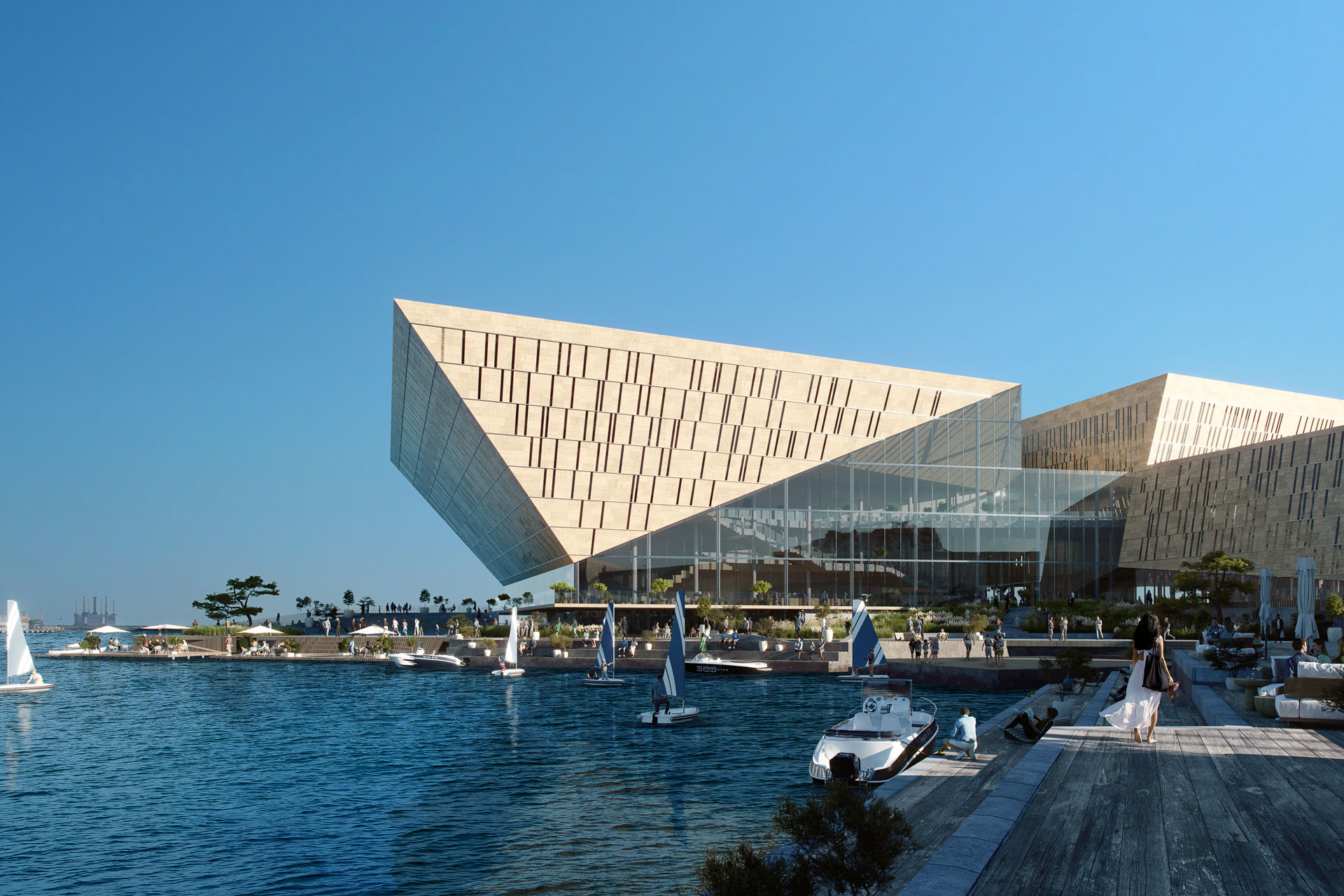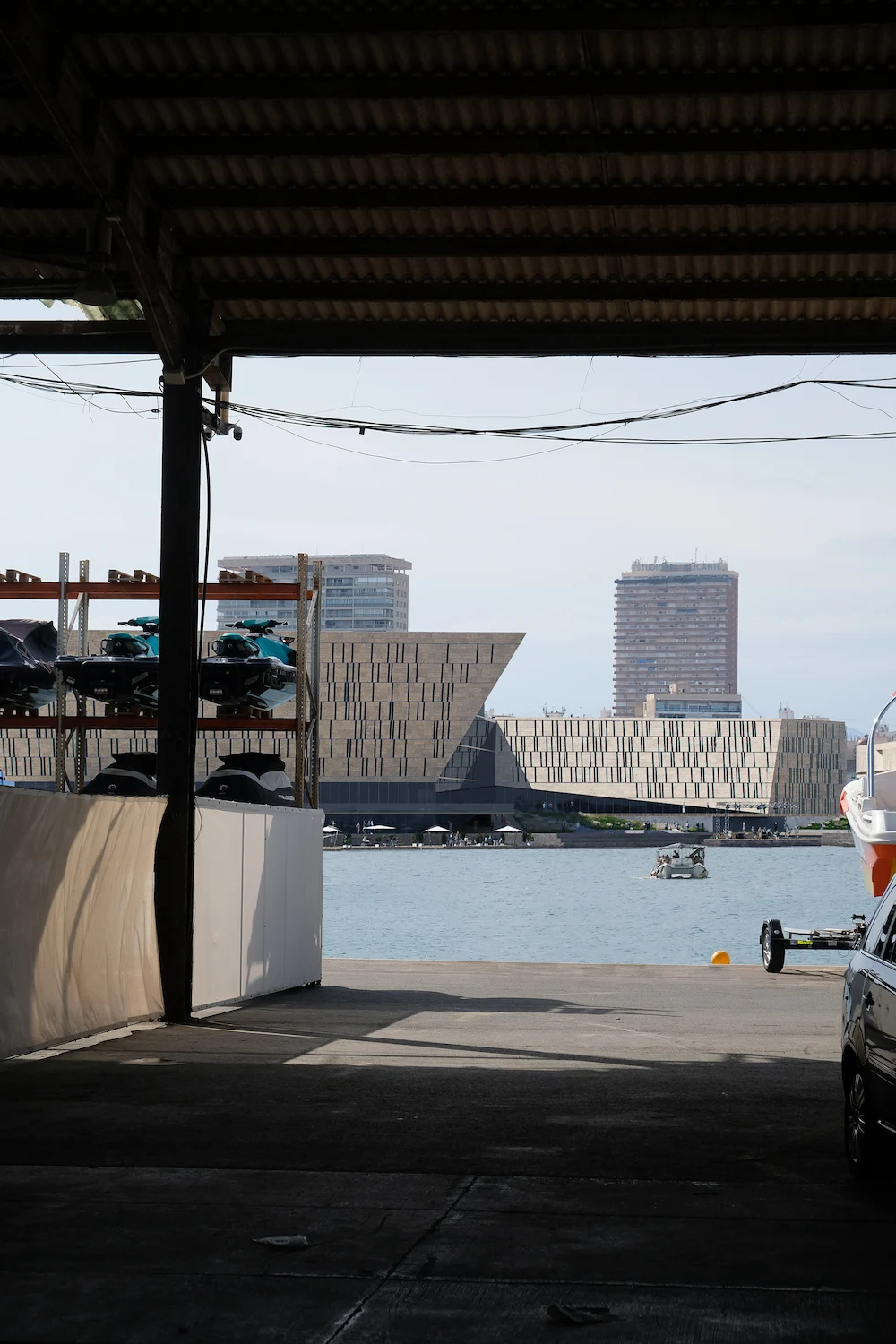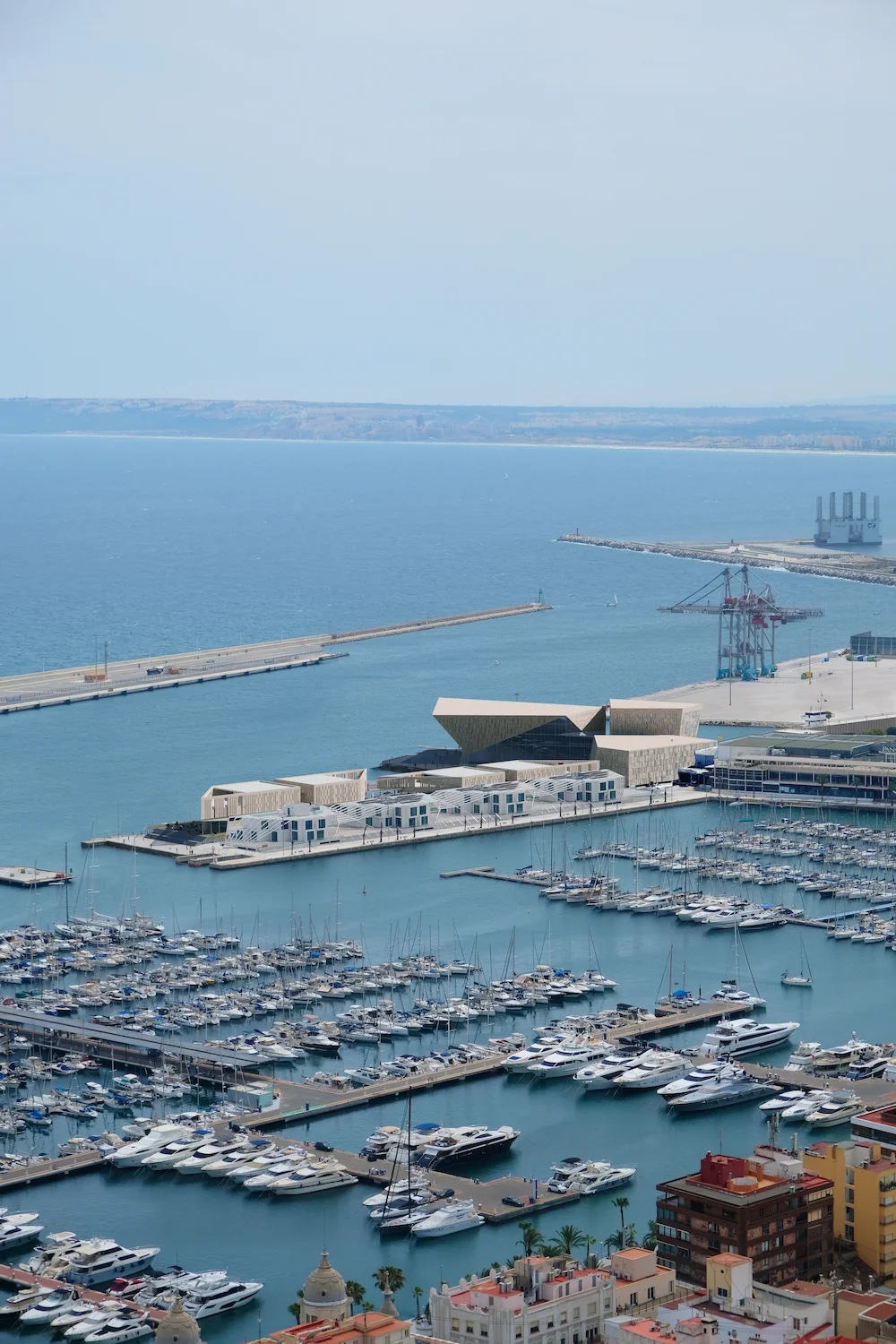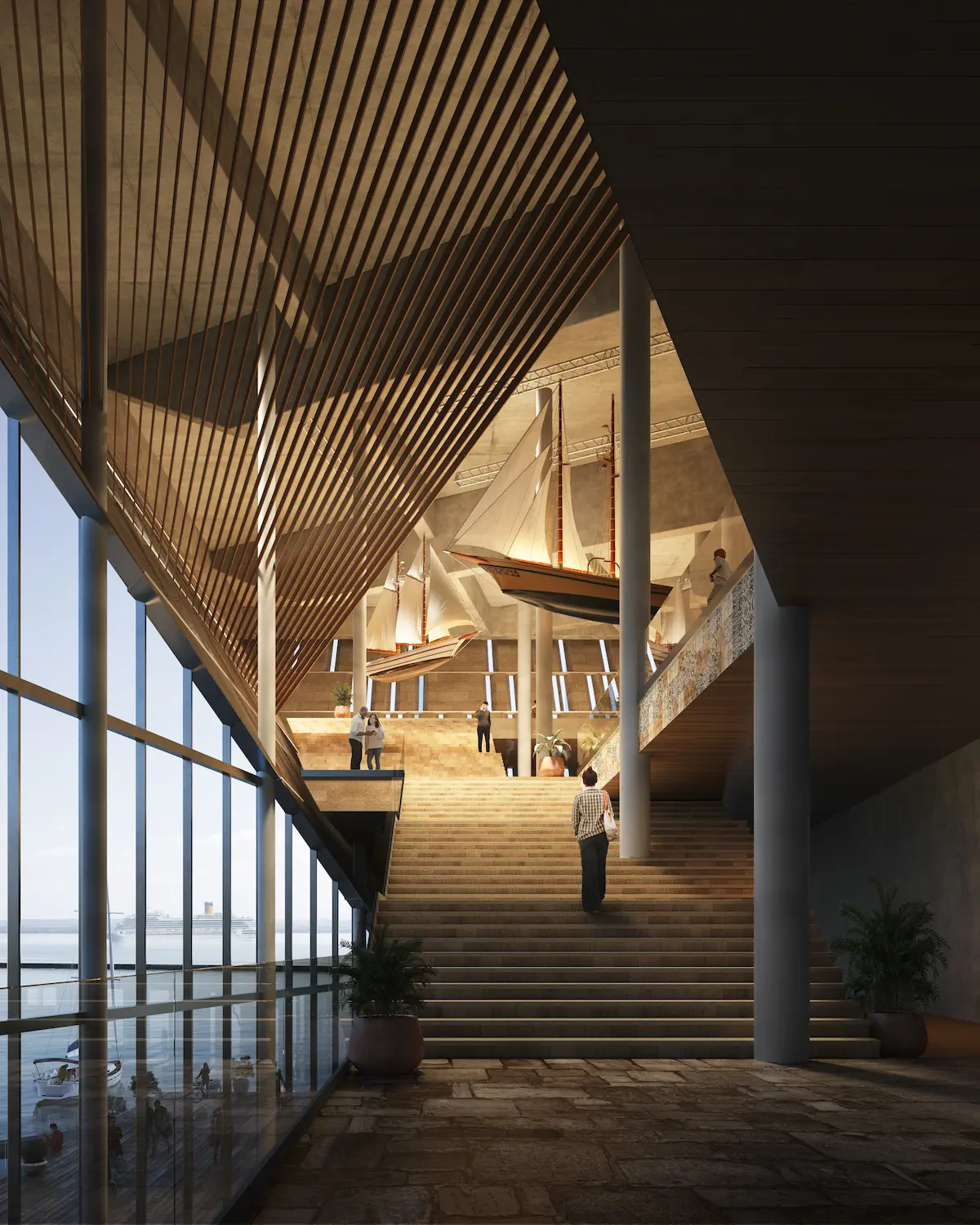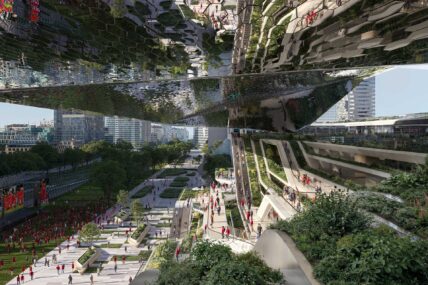Alicante Congress Centre
Architectural Renders Reveal UNS Proposal in Alicante
Three interlocking volumes
Architectural competitions today are won on experience, clarity, and cultural fit. For Alicante’s proposed Congress Center on the harbor—an inverted-castle massing that tilts seaward—our role as an architectural visualization studio was to translate a sharp architectural idea into legible images and show only what helps the jury’s decisions.
ZOA Studio embedded early as a co-creator with UNS: we walked the promenade in Alicante, photographed the marina, studied the Mediterranean light—hard sun, deep contrast, humid air—and built the plates around what a visitor would truly see. That upstream effort shaped every render, from glass reflections hinting at the hilltop fortress to the calibrated read of three interlocking volumes.
Contrarian on purpose, we recommended a shore-based hero instead of the typical “from the water” beauty shot—because juries don’t arrive by boat. Our photorealistic architectural renderings aimed for calm precision over drama: images that support design intent, not overwhelm it.
Competition pressure
The hard problem wasn’t style—it was legibility. The main body splits into three masses with decisive chamfers; the façade leans outward while the windows remain vertical. In careless views those volumes merge and the geometry reads “off.” We solved it the slow way: iterating camera height and angle until the three solids separated, then rotating the sun so bright and shaded planes interlocked cleanly, proving the tilt without theatrics.
Site photography anchored materials and atmosphere—the sea’s color, industrial backdrop, vessel scale—so the context feels earned, not generic. Programmatically, we treated the lobby as “arrival in motion,” staging people as if entering an event; that one narrative choice communicates purpose better than any object prop. We first sketched a full-size racing hull as a centerpiece, then refined it into a lightweight hanging installation—still maritime, far less literal. Local culture informed the night exterior: a coastal glow and festive embers—evoking Las Hogueras de San Juan, the Bonfires of Saint John—give the building a civic pulse without slipping into postcard kitsch.
We delivered a compact set of sketches and final renders designed for decision-making, not gallery walls: a daytime shore-based hero exterior, an evening coastal atmosphere plate, and a lobby arrival interior. Supporting work included location photography and curated sketches to document intent. Whether or not a scheme wins, this is the result we optimize for: images that make an architect’s argument stronger under competition pressure.
The industry often defaults to maximal angles and VFX gloss; Alicante proved that a calm, editorial approach—rooted in site, culture, and human eye level—gives architects confidence.
Difficult to capture
The uniqueness of the design made it both inspiring and difficult to capture in just two or three final renders. Our 17 initial sketches not only guided the selection of the lead images but later supported UNS’s communication on social media and in the press. The project’s complexity turned into a creative playground for our artists—worthy of many more moods and angles—and even sparked small in-house competitions within the studio.
Although the proposal, visualized here, was not selected, the competition was ultimately won by local practice Frade Arquitectos, whose project is now under construction on the Alicante waterfront. For us, the Alicante project reaffirms a simple lesson: even in unbuilt work, visualization has lasting value when it captures both the spirit of place and the intent of architecture.
Project details
Location
Alicante, Spain
Partner
Team
Bence Falussy
Mariia Lazaryk
